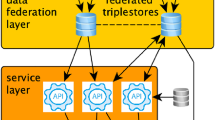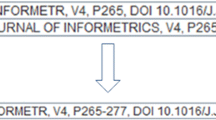Abstract
An overview of the Data Citation Index is provided. Thomson Reuters developed this resource in response to a stated desire among members of the research community for increased attribution of non-traditional scholarly output. Launched in October of 2012 on the Web of science research platform, its aims include linking published research articles to their underlying data sets and tracking the citation of the data, as well as encouraging bibliographic citation of data. Cross-disciplinary search capabilities in the Index enable new possibilities for data discovery and synthesis. Data repositories are evaluated with respect to various selection criteria, with particular attention to their relevance to scientific and scholarly research. Index content reflects current data deposition practices. As data citation standards and practices continue to move toward widespread formalization and adoption, the initiative seeks to address issues of data citation, reuse, and author credit in a developing climate.





Similar content being viewed by others
References
Canada’s Action Plan in Open Government. http://data.gc.ca/eng/canadas-action-plan-open-government. Accessed 16 March 2014
The Open Government Partnership: Second Open Government National Action Plan for the United States of America. http://www.whitehouse.gov/sites/default/files/docs/us_national_action_plan_6p.pdf. Accessed 16 March 2014
NSF Data Management Plan Requirements. https://www.nsf.gov/eng/general/dmp.jsp. Accessed 16 March 2014
Bloom T, Ganley E, Winker M (2014) Data access for the open access literature: PLoS’S data policy. PLoS Biol 12(2):e1001797. doi:10.1371/journal.pbio.1001797
Piwowar HA, Day RS, Fridsma DB (2007) Sharing detailed research data is associated with increased citation rate. PLoS One 2(3):e308. doi:10.1371/journal.pone.0000308
Repository Evaluation, Selection, and Coverage Policies for the Data Citation Index within Thomson Reuters Web of Science. http://wokinfo.com/products_tools/multidisciplinary/dci/selection_essay/. Accessed 21 May 2014
Downs RR, Chen RS (2010) Self-assessment of a long-term archive for interdisciplinary scientific data as a trustworthy digital repository. J Digit Inf 11 (1)
DataCite http://www.datacite.org/whycitedata. Accessed 16 March 2014
Joint Declaration of Data Citation Principles http://www.force11.org/datacitation. Accessed 16 March 2014
Author information
Authors and Affiliations
Corresponding author
Rights and permissions
About this article
Cite this article
Force, M.M., Robinson, N.J. Encouraging data citation and discovery with the Data Citation Index. J Comput Aided Mol Des 28, 1043–1048 (2014). https://doi.org/10.1007/s10822-014-9768-5
Received:
Accepted:
Published:
Issue Date:
DOI: https://doi.org/10.1007/s10822-014-9768-5




